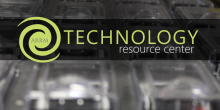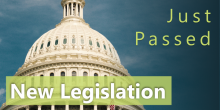What Kind of Technology Is Available?
The use of technology among individuals with disabilities is becoming increasingly more mainstream, funded, and has established practices and implementation processes.
Assistive Technology
Assistive technology provides help with communication, environmental manipulation, and integration into the community. Many of these come in the form of smartphone and tablet apps, personal home assistants (such as Amazon Echo or Google Home), and commercial software. These technologies can be easily integrated into any care plan at home, at work, or on the go.
Remote Support Technology
Remote support technology allows people to get the support they need without having support staff physically present at all times. Remote support provides increased independence and improves the safety and security of the persons served.
View Minnesota Department of Human Services policies regarding utilizing these technologies in the Resource Library.
Why Utilize Technology?
Technology has the ability to increase independence and self-sufficiency for people living with disabilities. It is a powerful tool that can easily be overlooked when deciding on what care options are best. The use of technology not only helps the individual receiving support, but also family members, case managers, and providers as well.
- Increased Independence - It is found that when individuals are provided with tools to control more of their lives and the physical presence of caregivers is reduced through remote supervision, individuals try to and do more for themselves.
- Extend the reach of caregivers/direct support professional (DSP) - In this time of critical staff shortages, technology enables DSPs to supervise, observe, and offer guidance to more individuals when needed without having to be present waiting to be needed. Technology helps to reduce passive caregiving time, allowing caregivers to be more effective when they are present.
- Improved tools to deliver person-centered supports - Technology enables more personalized service allowing caregivers to bring the individualized support to the person when s/he needs it.
How to Begin?
It all starts with a conversation—a collaboration between providers, families and persons served, and case managers. From discussions, a plan is put in place, funding is found, and installation and training begin. Following implementation, measurement and evaluation continue to occur, ensuring the solution is working as expected and pinpointing areas for improvement and expansion.
The state of Minnesota has worked to develop methods, funding, and tools for the use of technology. When having the conversation regarding implementation, teams should discuss what is currently happening and how technology resources might apply/benefit the individual(s) they are supporting.
Learn the keys to a successful conversation and be ready to answer common questions from self-advocates, family members, and case managers. Learn how to start the conversation with case managers and providers to identify goals and outcomes technology might be able to assist with. Begin the conversation with self-advocates, family, and providers to find the right mix of technology uses available to implement in care plans. Find the Resources that Matter to You:

Providers

Family & Self-Advocates

Case Managers
Resources for Getting Started







